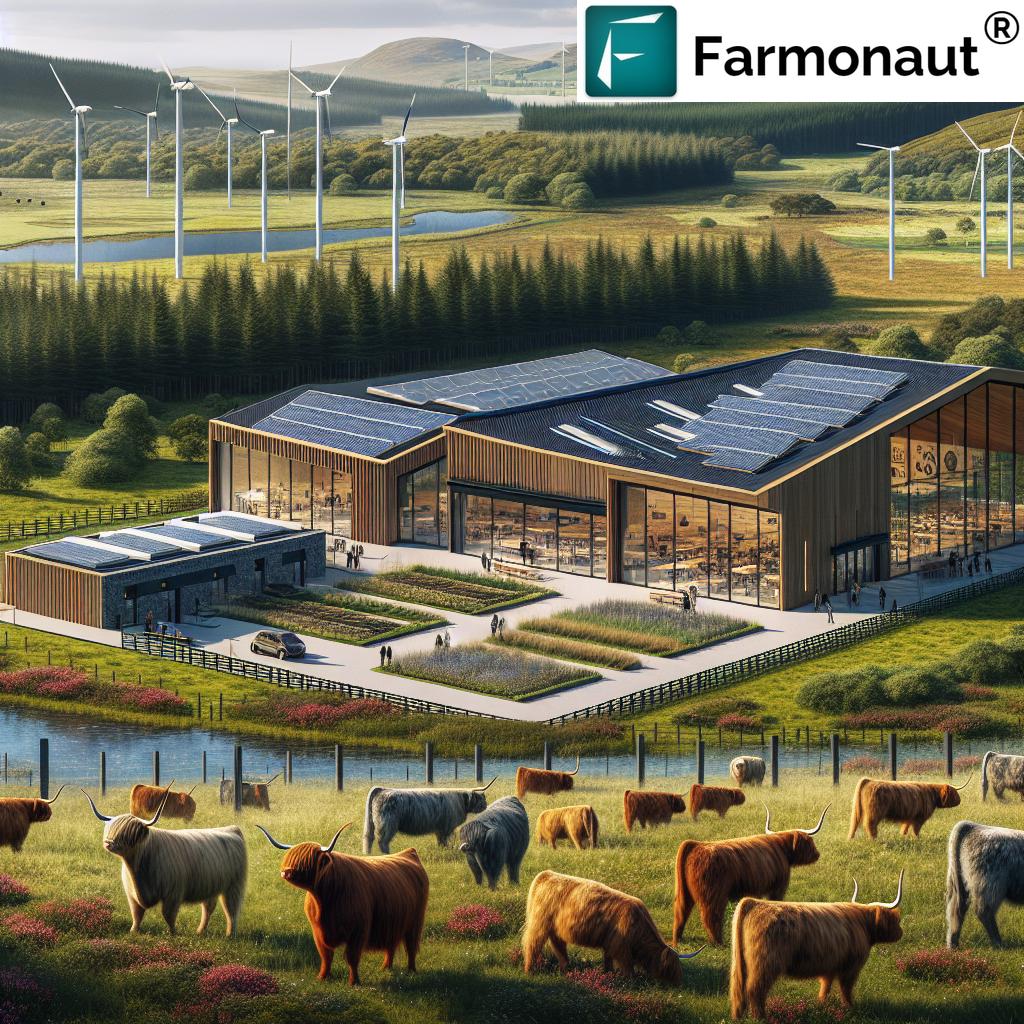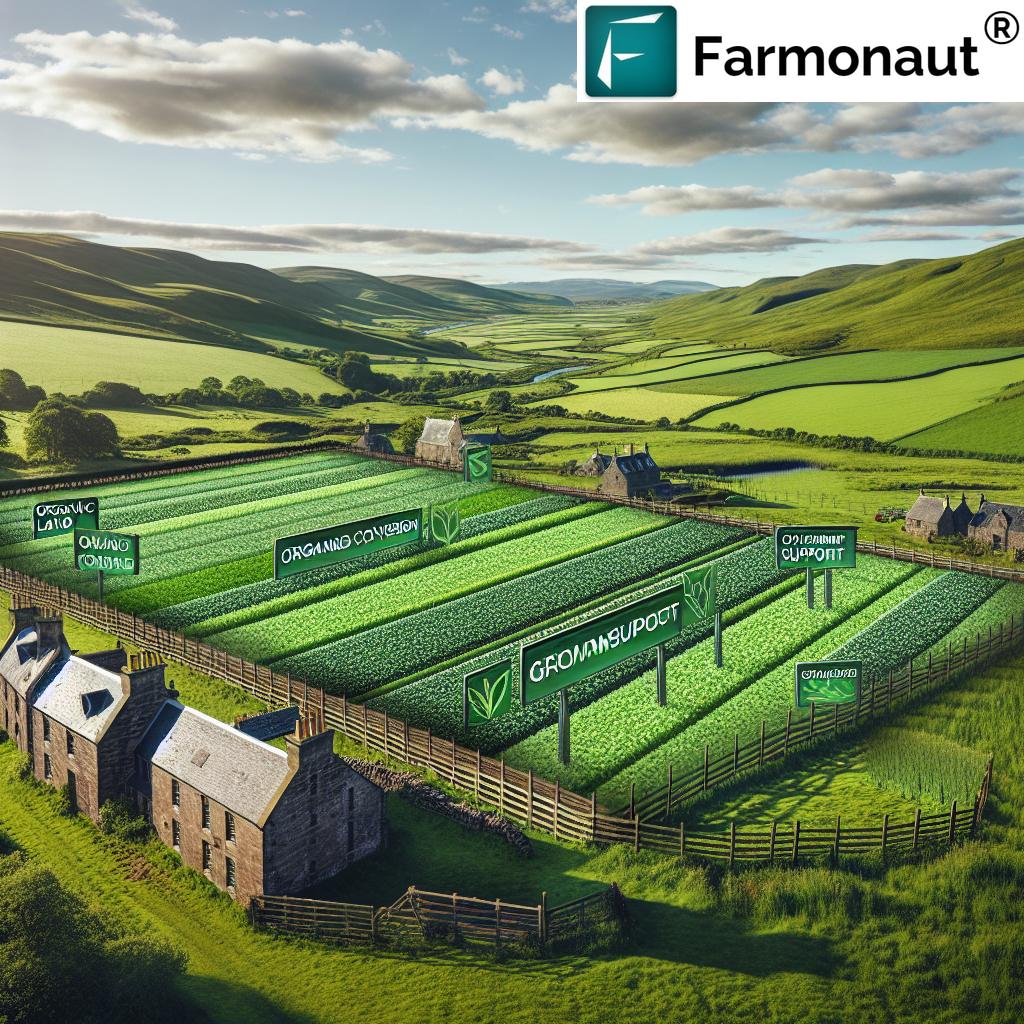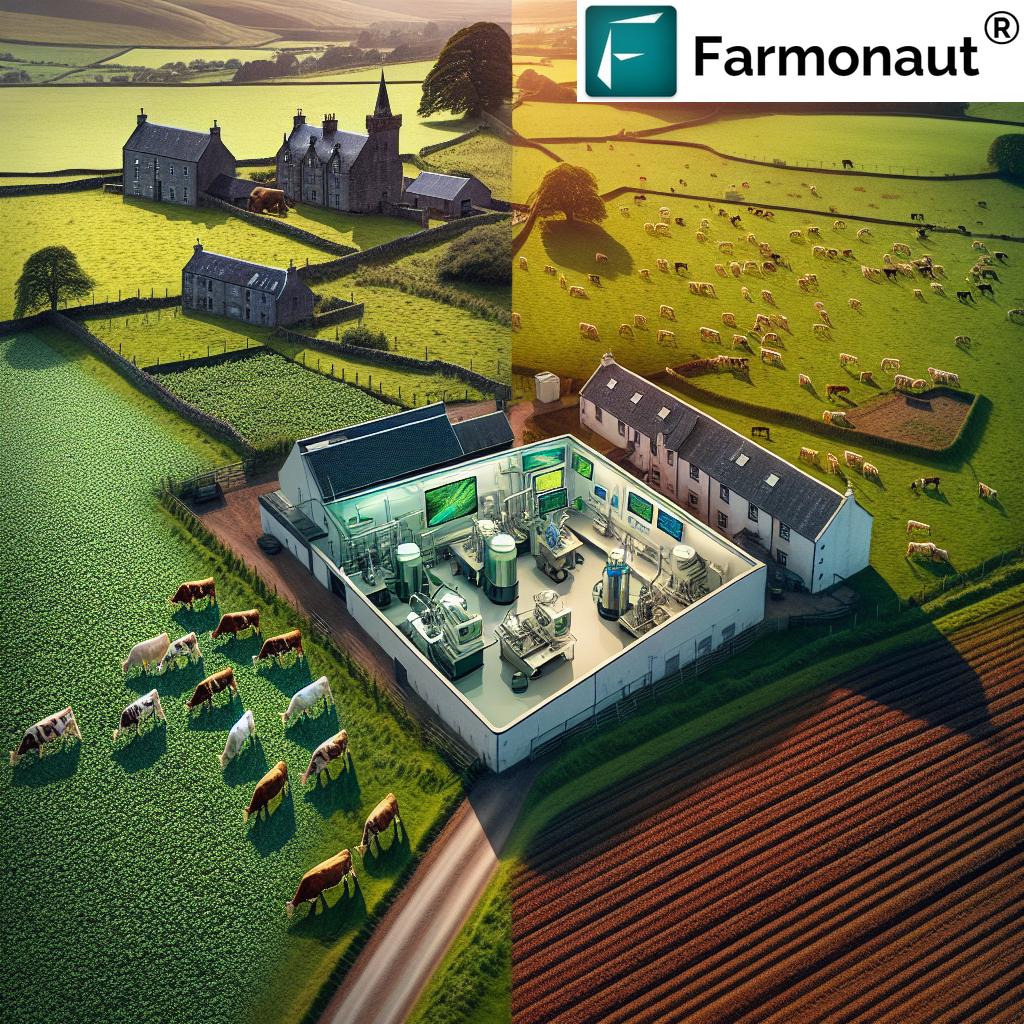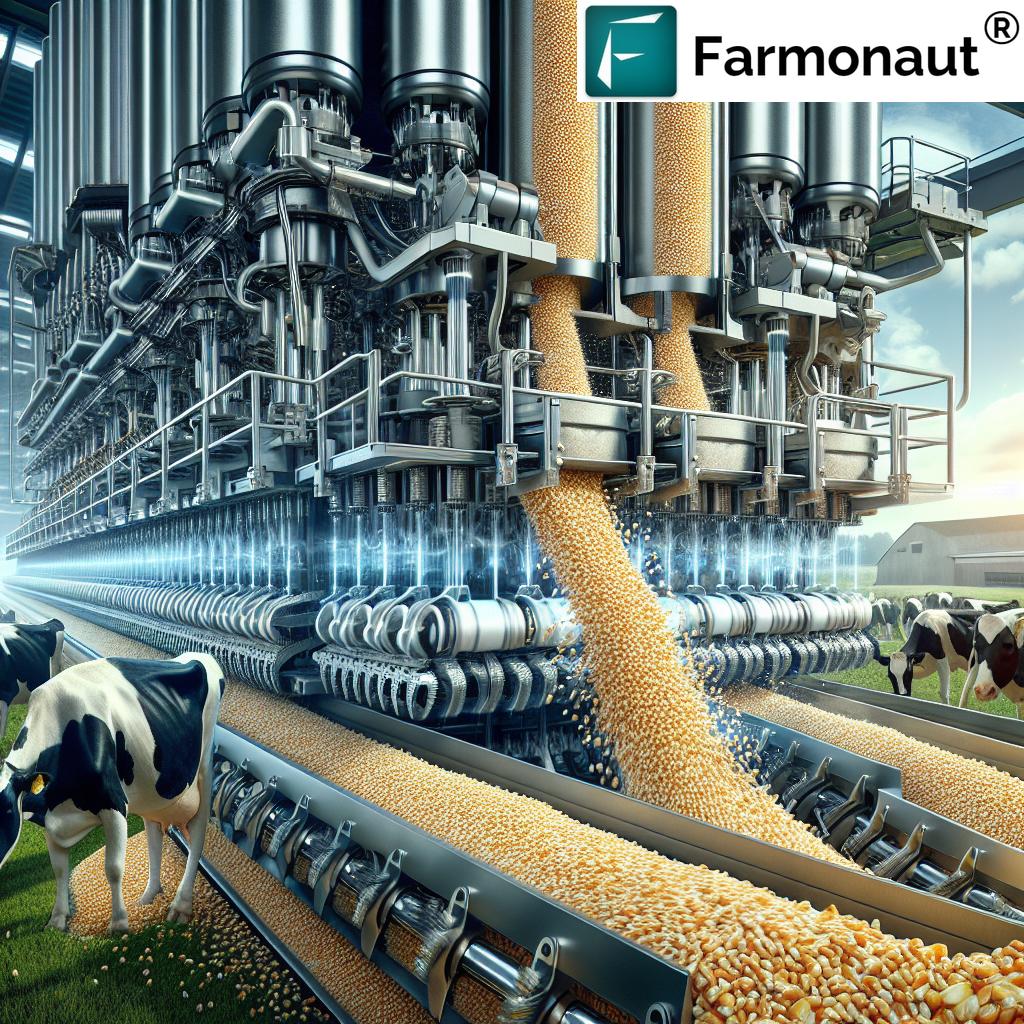Sustainable Scottish Estate Management: Balancing Conservation and Economic Development in National Parks
“Scotland’s Galloway region is proposing its 3rd national park, balancing conservation with economic development in rural areas.”
Welcome to our comprehensive exploration of sustainable Scottish estate management and the delicate balance between conservation and economic development in national parks. As we delve into this complex topic, we’ll examine the proposed establishment of a new national park in Galloway and the intricate challenges facing rural Scotland today.
The Galloway National Park Proposal: A New Chapter in Scottish Conservation
The proposal to establish a new national park in the Galloway region and parts of South and East Ayrshire has sparked considerable debate among conservationists, local communities, and policymakers. This potential third national park for Scotland raises important questions about the role of these protected areas in modern rural development.
While the idea of a new national park may seem promising at first glance, it’s crucial to critically assess its potential impact on both the local environment and economy. As advocates for sustainable land management, we at Farmonaut understand the importance of utilizing advanced technology to make informed decisions about land use and conservation.
Our satellite-based farm management solutions provide valuable insights for estate managers and policymakers alike, offering real-time data on land use, crop health, and environmental factors. This technology can play a crucial role in informing decisions about the establishment and management of national parks.
The Evolution of Scottish Estates: From Traditional Farming to Modern Diversification
To understand the current landscape of Scottish estate management, we must look at the historical context that has shaped these iconic lands. Estates like Alvie and Dalraddy serve as prime examples of how changing economic conditions have influenced land use over time.

Historically, these estates were primarily focused on traditional farming and forestry. However, as financial returns from these sectors declined, many estates were repurposed for field sports and recreation. This shift in land use priorities has had a significant impact on the local economy and environment.
Today, progressive estate managers are exploring innovative ways to diversify their income streams while maintaining the natural beauty and ecological integrity of their lands. This is where agricultural diversification and agri-tourism opportunities come into play.
Agricultural Diversification: A Key to Sustainable Estate Management
Agricultural diversification is essential for the long-term viability of Scottish estates. By embracing a variety of farming practices and land uses, estates can create multiple revenue streams and build resilience against market fluctuations. Some successful diversification strategies include:
- Organic farming and specialty crop production
- Agri-tourism initiatives such as farm stays and guided tours
- Sustainable forestry and woodland management
- Renewable energy projects, including wind and solar farms
- Conservation programs and wildlife management
At Farmonaut, we support these diversification efforts through our advanced satellite monitoring and AI-driven advisory systems. Our technology helps estate managers make data-driven decisions about crop selection, resource allocation, and land use planning.
For more information on how our satellite technology can revolutionize your land management practices, visit our web app or download our mobile apps:
Woodland Management Techniques: Balancing Timber Production and Conservation
Woodland management is a crucial aspect of sustainable Scottish estate management. The challenge lies in balancing timber production with conservation goals and recreational uses. Modern woodland management techniques focus on:
- Selective harvesting to maintain forest health and biodiversity
- Reforestation with native species to enhance ecological value
- Creation of wildlife corridors to support animal populations
- Integration of recreational facilities like hiking trails and wildlife viewing areas
Our satellite imaging technology at Farmonaut can assist in monitoring forest health, tracking reforestation efforts, and identifying areas that require intervention. This data-driven approach ensures that woodland management decisions are based on accurate, up-to-date information.
Renewable Energy in Agriculture: Opportunities and Challenges
The integration of renewable energy projects into Scottish estates presents both opportunities and challenges. While wind and solar power can provide additional income streams and contribute to sustainability goals, their implementation must be carefully considered.
Some key considerations for renewable energy projects on estates include:
- Visual impact on the landscape and potential effects on tourism
- Environmental impact assessments and wildlife protection measures
- Grid connection and infrastructure requirements
- Community engagement and benefit-sharing schemes
It’s important to note that while renewable energy can play a role in sustainable estate management, it should not come at the expense of other conservation efforts or traditional land uses. A balanced approach is key to ensuring the long-term viability of Scottish estates.
The Role of National Parks in Rural Economic Development
The debate surrounding the proposed Galloway National Park raises important questions about the role of these protected areas in rural economic development. While national parks can undoubtedly boost tourism and create jobs, there are concerns about their impact on local communities and traditional land uses.
“Scottish estates like Alvie and Dalraddy have evolved over centuries, shifting from traditional farming to diverse agri-tourism ventures.”
Some potential benefits of national park designation include:
- Increased tourism revenue for local businesses
- Enhanced conservation efforts and wildlife protection
- Improved infrastructure and access to rural areas
- Opportunities for sustainable agriculture and eco-tourism
However, it’s crucial to address potential drawbacks such as:
- Restrictions on traditional land uses and development
- Increased property values that may price out local residents
- Overcrowding and environmental degradation from tourism
- Conflicts between conservation goals and economic development
At Farmonaut, we believe that technology can play a crucial role in mitigating these challenges. Our satellite monitoring and AI-driven advisory systems can help park managers and local authorities make informed decisions about land use, visitor management, and conservation efforts.

Sustainable Farming Practices: The Future of Scottish Agriculture
As we look to the future of Scottish estate management, sustainable farming practices will play an increasingly important role. These practices not only support environmental conservation but also contribute to the long-term economic viability of rural communities.
Some key sustainable farming practices for Scottish estates include:
- Precision agriculture techniques to optimize resource use
- Organic and regenerative farming methods
- Integrated pest management to reduce chemical use
- Crop rotation and diversification to improve soil health
- Water conservation and sustainable irrigation practices
Farmonaut’s technology supports these sustainable farming practices by providing real-time data on crop health, soil moisture, and weather patterns. This enables farmers to make informed decisions that optimize resource use and minimize environmental impact.
Preserving Cultural Heritage in Modern Estate Management
While embracing modern land management techniques and technologies, it’s crucial not to lose sight of the rich cultural heritage embedded in Scottish estates. Many of these properties have centuries of history, including traditional agricultural practices, architectural landmarks, and folkloric traditions.
Preserving this cultural heritage while adapting to modern economic realities is a delicate balancing act. Some strategies for maintaining cultural heritage include:
- Restoration and maintenance of historic buildings and landscapes
- Promotion of traditional crafts and agricultural practices
- Development of heritage tourism experiences
- Documentation and preservation of local histories and traditions
- Integration of cultural education into estate management plans
By preserving these cultural assets, Scottish estates can differentiate themselves in the tourism market and provide unique, authentic experiences for visitors. This approach can help generate additional income while maintaining the distinctive character of rural Scotland.
The Role of Technology in Modern Estate Management
As we navigate the complexities of sustainable Scottish estate management, technology plays an increasingly important role. At Farmonaut, we’re at the forefront of this technological revolution in agriculture and land management.
Our satellite-based crop health monitoring system provides estate managers with valuable insights into:
- Vegetation health (NDVI)
- Soil moisture levels
- Crop yield predictions
- Early detection of pest and disease outbreaks
This data enables more efficient resource allocation, reduces waste, and helps optimize crop yields. Furthermore, our AI-driven advisory system, Jeevn AI, provides personalized recommendations based on this data, helping estate managers make informed decisions about planting, irrigation, and pest management.
For developers interested in integrating our technology into their own systems, we offer a comprehensive API. Learn more about our API and access our API Developer Docs.
Comparative Analysis of Scottish Estate Management Strategies
To better understand the various approaches to Scottish estate management, let’s examine a comparative analysis of different strategies:
| Management Strategy | Economic Impact (Est. Annual Revenue) | Conservation Value (1-5) | Employment Generation | Renewable Energy Potential (1-5) | Cultural Heritage Preservation (1-5) |
|---|---|---|---|---|---|
| Traditional Farming | £500,000 – £1,000,000 | 3 | 10-20 jobs | 2 | 4 |
| Agri-tourism | £1,000,000 – £2,000,000 | 4 | 20-40 jobs | 3 | 5 |
| Forestry Investment | £750,000 – £1,500,000 | 4 | 15-30 jobs | 4 | 3 |
| Renewable Energy Focus | £2,000,000 – £3,000,000 | 3 | 5-15 jobs | 5 | 2 |
| Mixed Use (Alvie & Dalraddy Model) | £1,500,000 – £2,500,000 | 5 | 30-50 jobs | 4 | 5 |
This table illustrates the trade-offs between different management strategies. The mixed-use model, as exemplified by estates like Alvie and Dalraddy, appears to offer a balanced approach that maximizes economic benefits while maintaining high conservation value and cultural heritage preservation.
The Future of Scottish Estate Management
As we look to the future, it’s clear that Scottish estate management will continue to evolve. The key to success lies in finding the right balance between conservation, economic development, and cultural preservation. Some trends we expect to see in the coming years include:
- Increased adoption of precision agriculture technologies
- Greater focus on carbon sequestration and biodiversity enhancement
- Expansion of agri-tourism and experiential travel offerings
- Integration of renewable energy projects with traditional land uses
- Collaborative approaches to landscape-scale conservation
At Farmonaut, we’re committed to supporting this evolution through our innovative technologies and data-driven insights. By providing estate managers with the tools they need to make informed decisions, we can help ensure a sustainable future for Scotland’s iconic rural landscapes.
Frequently Asked Questions
- What is the main challenge in managing Scottish estates today?
The primary challenge is balancing economic viability with conservation efforts and preserving cultural heritage. - How can technology like Farmonaut’s help in estate management?
Farmonaut’s satellite monitoring and AI-driven advisory systems provide real-time data on land use, crop health, and environmental factors, enabling more informed decision-making. - What are the benefits of establishing a new national park in Galloway?
Potential benefits include increased tourism revenue, enhanced conservation efforts, improved infrastructure, and opportunities for sustainable agriculture and eco-tourism. - How can Scottish estates diversify their income streams?
Estates can diversify through agri-tourism, sustainable forestry, renewable energy projects, and conservation programs. - What role does cultural heritage play in modern estate management?
Cultural heritage is crucial for maintaining the distinctive character of rural Scotland and can provide unique tourism experiences, generating additional income.
Conclusion: A Balanced Approach to Scottish Estate Management
As we’ve explored throughout this blog post, sustainable Scottish estate management requires a delicate balance between conservation, economic development, and cultural preservation. The proposed establishment of a new national park in Galloway highlights the ongoing debate about how best to achieve this balance.
By embracing innovative technologies, sustainable farming practices, and diverse income streams, Scottish estates can adapt to changing economic conditions while preserving their natural beauty and cultural heritage. At Farmonaut, we’re proud to support this evolution through our advanced satellite monitoring and AI-driven advisory systems.
As we look to the future, it’s clear that the success of Scottish estate management will depend on collaboration between landowners, local communities, conservationists, and policymakers. By working together and leveraging the best available technologies and practices, we can ensure a sustainable and prosperous future for Scotland’s iconic rural landscapes.
To learn more about how Farmonaut can support your estate management efforts, visit our web app or explore our subscription options below:
Together, we can shape a sustainable future for Scottish estates that honors their rich history while embracing the opportunities of the modern world.















